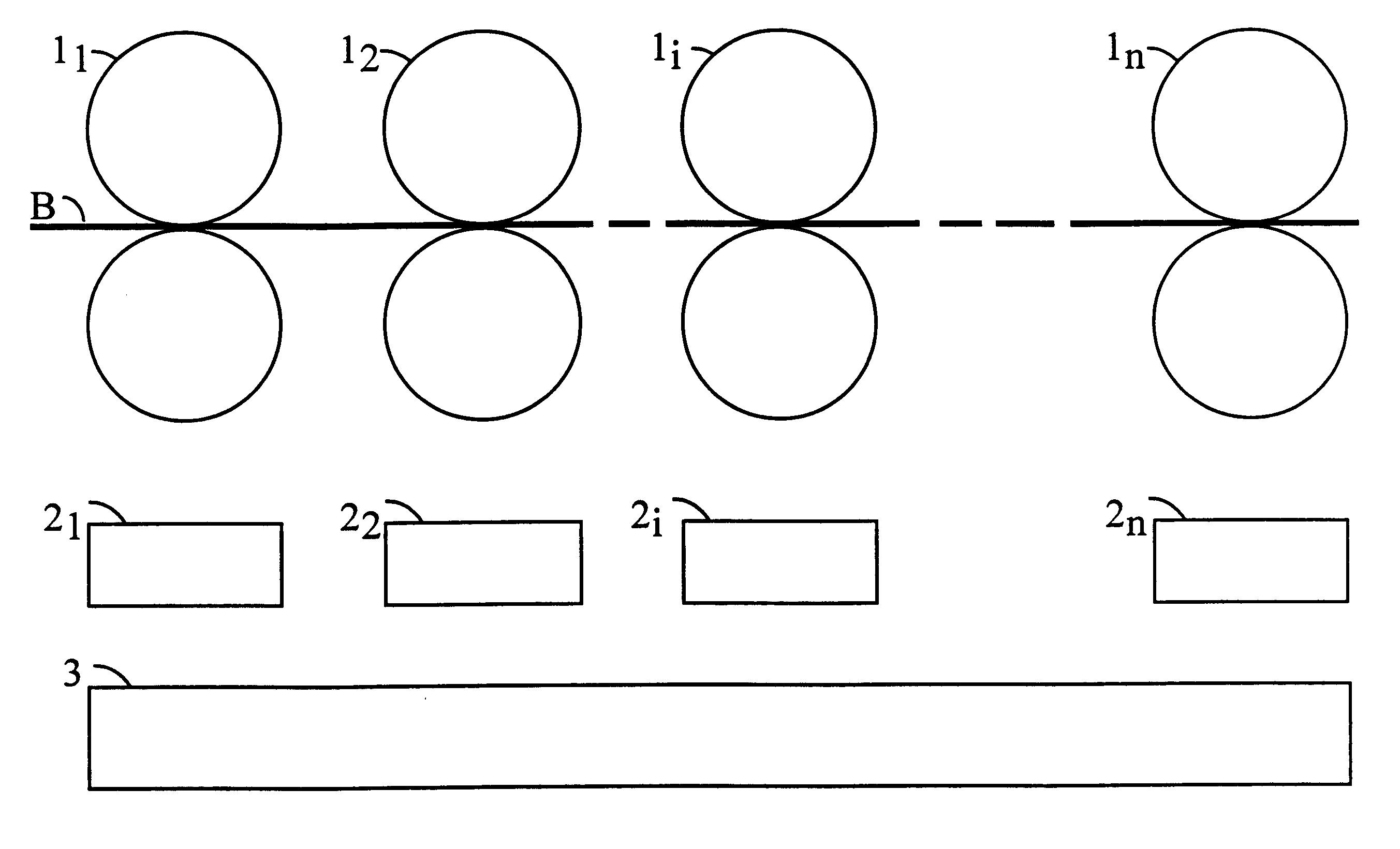Method of regulating tension/compression in a multi-frame hot rolling mill, and a corresponding control system
a multi-frame hot rolling mill and control system technology, applied in the direction of tension/compression control devices, roll mill control devices, manufacturing tools, etc., can solve the problems of inability to completely eliminate, the coefficient of friction cannot remain accurately constant, and the magnitude of the variation of rolling operations
- Summary
- Abstract
- Description
- Claims
- Application Information
AI Technical Summary
Benefits of technology
Problems solved by technology
Method used
Image
Examples
Embodiment Construction
The rolling mill shown in the sole figure is assumed to be a hot mill for transforming metal products B. For example, it might be a run for making wire, or section member, or bar, or indeed strip or plate. The run is conventionally made up of a plurality of successive frames 1 represented by a frame 1.sub.1 at the entrance to the run, a frame 1.sub.n at the outlet from the run, and intermediate frames, of which only frames 1.sub.2 and 1.sub.i are shown, each frame being represented by a respective pair of cylinders.
In conventional manner, the cylinders of the frames are driven by electric motors each under the control of a corresponding control unit 2, e.g. a unit 2.sub.1, 2.sub.2, 2.sub.i, or 2.sub.2. These units are themselves parts of a control system in which they are under the control of at least one supervisor unit 3. The control and supervisor units are assumed to be of the programmed logic type and they are implemented around processors with which various memories and specia...
PUM
| Property | Measurement | Unit |
|---|---|---|
| tension/compression | aaaaa | aaaaa |
| torque | aaaaa | aaaaa |
| speed | aaaaa | aaaaa |
Abstract
Description
Claims
Application Information
 Login to View More
Login to View More - R&D
- Intellectual Property
- Life Sciences
- Materials
- Tech Scout
- Unparalleled Data Quality
- Higher Quality Content
- 60% Fewer Hallucinations
Browse by: Latest US Patents, China's latest patents, Technical Efficacy Thesaurus, Application Domain, Technology Topic, Popular Technical Reports.
© 2025 PatSnap. All rights reserved.Legal|Privacy policy|Modern Slavery Act Transparency Statement|Sitemap|About US| Contact US: help@patsnap.com



